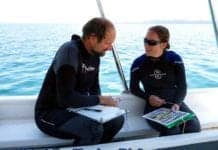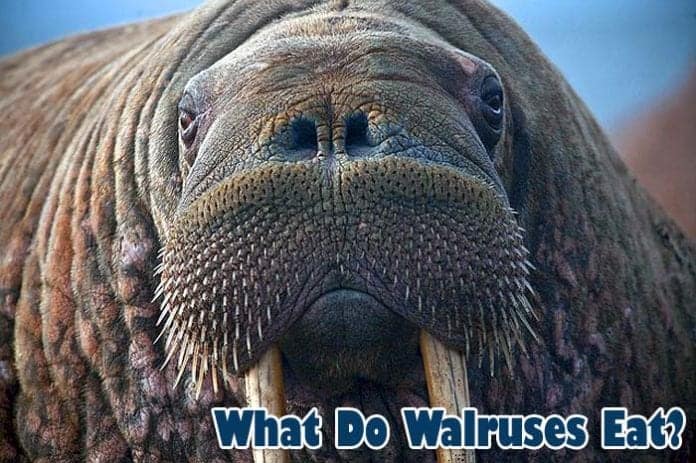
What Do Walruses Eat? Walruses are ‘Arctic Circles creatures, considered to be one of the largest fin-footed, semi-aquatic animals, sea mammals in particular.
These organisms have flabby bodies, which often spot pink or brown hue, with short fur lining most of their bodies except for their fins. Though not aggressive, walruses are carnivorous.
These sea mammals mainly feed on benthic bivalve sea mollusks and other invertebrates. They will occasionally feed on other sea mammals, including seal carcasses, mainly during scarce resource scenarios.
Table of Contents
What Do Walruses Eat?
![]()
Walruses Diet by Types
Only 1 walrus species exist. This species is categorized under the family Odobenidae. The scientific name of these sea mammals is Odobenus rosmarus.
This species is further divided into three subspecies, namely: the Pacific walrus (Odobenus rosmarus divergens), Laptev Walrus (Odobenus rosmarus laptevi), and the Atlantic walrus (Odobenus rosmarus rosmarus).
As their names suggest, the Pacific walrus is found in the Pacific Ocean, the Atlantic walrus is found in the Atlantic Ocean, and the Laptev walrus is found in the Laptev Sea.
Walruses prefer a diet of mollusks, primarily bivalves like clams. These enormous sea mammals may also dine on other marine bottom-dwelling invertebrates such as sea crustaceans, sea cucumbers, worms, gastropods, and cephalopods. They also feed on fish, seabirds, and seals.
- The most notable feature of walruses is their pair of tusks.
- In the real sense, these are their canine teeth, which can grow to about 1.0 m in males, and 0.6 m in females.
- These tusks play an instrumental role during navigation, and they also offer protective armor when faced with predators.
- Compared to female walruses, males are larger. Walruses can grow to a weight of about 2 tons.
- Female walruses weigh over 850 kg. Walruses have round heads, and their muzzles are lined with thick vibrissae.
- These Arctic giants do not have external ears. They have thick skin, which is underlined by very thick blubber, whose thickness can be 15 cm.
- Walruses are excellent swimmers and divers. They can dive to depths of about 90 m to forage.
- These organisms are very social among each other. They can form herds of about 2,000 members.
Walruses inhabit the areas around the Arctic Ocean. They can be found spending time inside the marine waters, on the icecaps, or the coastal sandy beaches.
![]()
How Do Walruses Hunt?
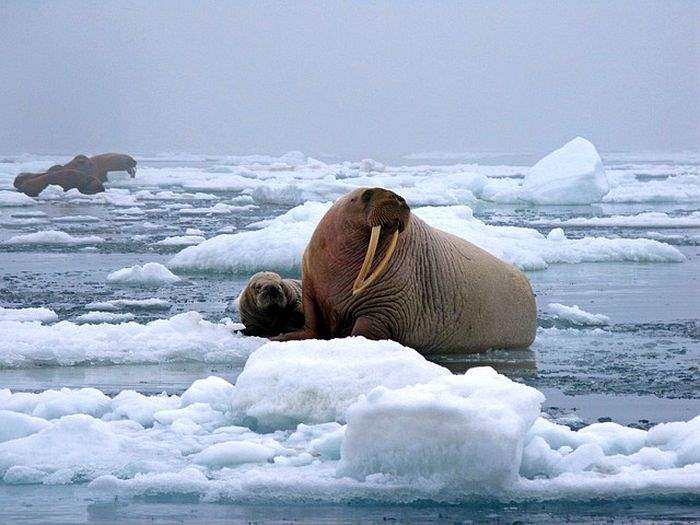
Walruses obtain their food (benthic invertebrates) by sweeping the bottom of the ocean.
- Because of the poor visibility in the ocean’s murky waters, walruses make use of their vibrissae to sweep through ocean sediments to detect their prey.
- They also use their front flippers to wave on the ocean’s floor to locate their prey.
![]()
When Do Walruses Eat?
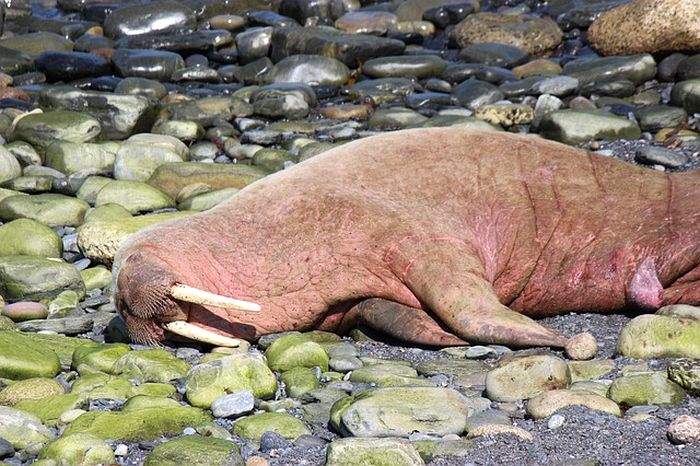
Often, walruses have been noted to follow a diurnal activity pattern. Meaning, they will likely be found foraging for food and eating at night.
![]()
How Often Do Walruses Eat?
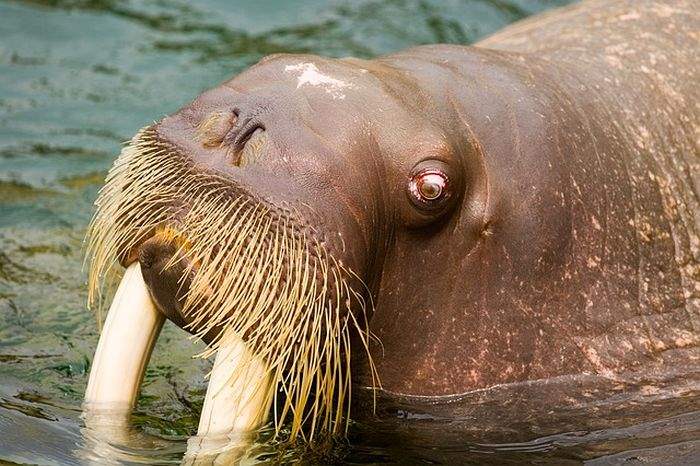
Observations on walruses feeding have indicated that these organisms can fill their stomachs twice per day.
- Walruses eat about 3-6% of their body weight per day.
- This eating behavior can be translated to about 120 kg per day for a male walrus weighing 2000 kg.
![]()
What Eats Walruses?
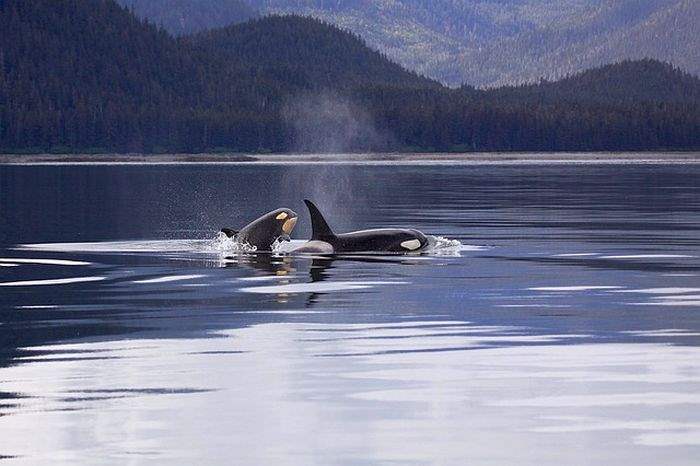
Adult walruses use their magnificent tusks as weapons to ward off predators.
- Walrus calves tend to be more vulnerable to predators.
- Examples of organisms that prey on walruses include polar bears and killer whales.
- Native people living in the Arctic region also hunt walruses for their meat, tusks, bones, and hides. These arctic Eskimos are the only individuals legally allowed to kill walruses.
![]()
Where Do Walruses Fit in the Animal Food Chain?
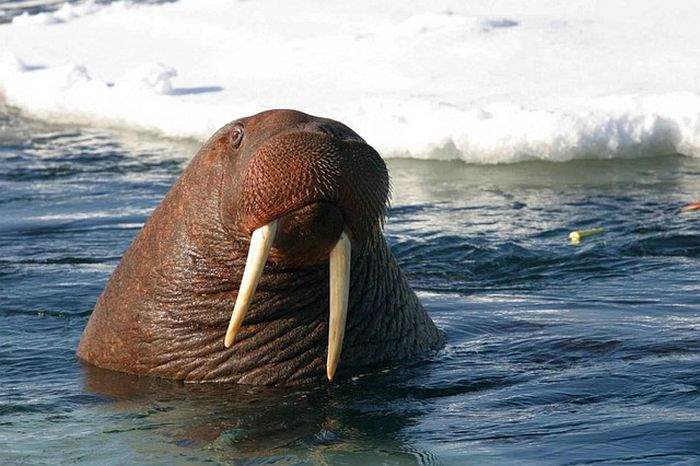
Walruses play a significant role in the animal food chain as prey and predators.
- By feeding on benthic organisms, they influence the structure and the local population of benthic invertebrates.
- As such, they help maintain a balance in the arctic ecosystem.
- Further, their foraging behavior makes them the Arctic’s keystone species. These enormous organisms sweep on the seafloor to find their food, an activity that exposes buried nutrients considered to be vital for other organisms in the food chain.
- In general, because of their feeding activity, they support the life of other organisms in their biotic community.
- Their presence in the ecosystem further confirms that without walruses, the Arctic’s biotic community would be thrown off balance.
- In their role as prey, walruses provide a vital source of nutrients to organisms that dine on them, thus promoting their survival.
![]()
Cite This Page
Key References
- “Walrus | National Geographic”. Accessed October 28, 2019. Link.
- “Walrus Facts | Live Science”. Accessed October 28, 2019. Link.
- “Odobenus rosmarus – an overview | ScienceDirect Topics”. Accessed October 28, 2019. Link.
- “All About the Walrus – Diet & Eating Habits | SeaWorld Parks & Entertainment”. Accessed October 28, 2019. Link.
- “ADW: Odobenidae: INFORMATION”. Accessed October 28, 2019. Link.





